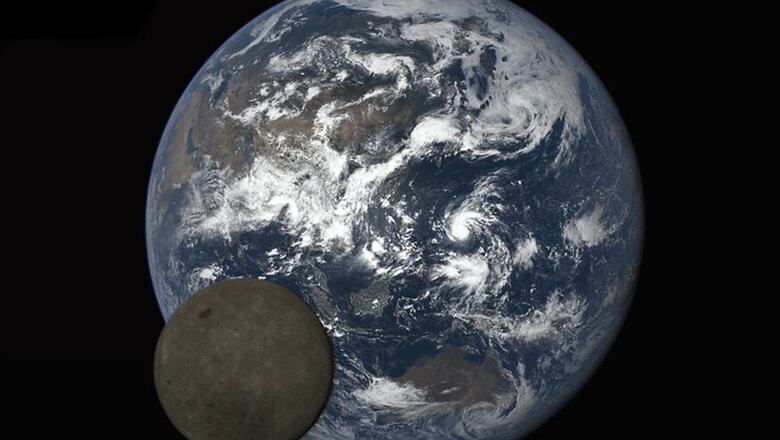
views
Washington: For the second time in a year, a NASA camera aboard the Deep Space Climate Observatory (DSCOVR) satellite captured a stunning view of the moon as it moved in front of the sun-lit side of Earth.
"For the second time in the life of DSCOVR, the moon moved between the spacecraft and Earth," said Adam Szabo, DSCOVR project scientist at NASA’s Goddard Space Flight Center in Greenbelt, Maryland.
"The project recorded this event on July 5 with the same cadence and spatial resolution as the first ‘lunar photobomb’ on July 16 last year," he added.
The images were captured by NASA’s Earth Polychromatic Imaging Camera (EPIC), a four-megapixel CCD camera and telescope on the DSCOVR satellite orbiting 1 million miles from Earth.
 On July 5, 2016, the moon passed between NOAA's DSCOVR satellite and Earth. NASA's EPIC camera aboard DSCOVR snapped these images over a period of about four hours. In this set, the far side of the moon, which is never seen from Earth, passes by. In the backdrop, Earth rotates, starting with the Australia and Pacific and gradually revealing Asia and Africa. Credits: NASA/NOAA
On July 5, 2016, the moon passed between NOAA's DSCOVR satellite and Earth. NASA's EPIC camera aboard DSCOVR snapped these images over a period of about four hours. In this set, the far side of the moon, which is never seen from Earth, passes by. In the backdrop, Earth rotates, starting with the Australia and Pacific and gradually revealing Asia and Africa. Credits: NASA/NOAA
From its position between the sun and Earth, DSCOVR conducts its primary mission of real-time solar wind monitoring for the National Oceanic and Atmospheric Administration (NOAA).
EPIC maintains a constant view of the fully illuminated Earth as it rotates, providing scientific observations of ozone, vegetation, cloud height and aerosols in the atmosphere.
The EPIC camera is providing a series of Earth images allowing study of daily variations over the entire globe.
EPIC takes a series of 10 images using different narrow band spectral filters -- from ultraviolet to near infrared -- to produce a variety of science products.



















Comments
0 comment